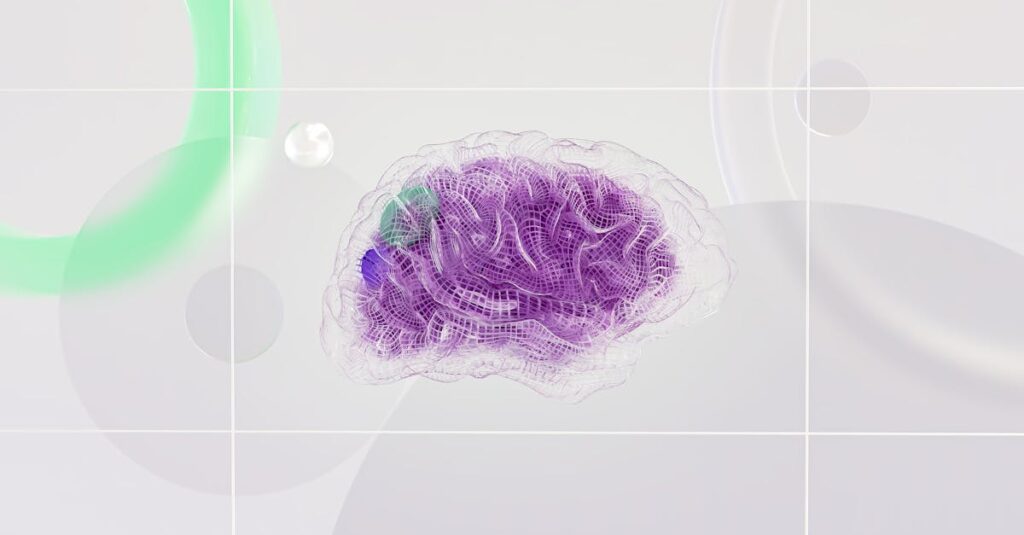In the realm of therapeutic techniques, Ericksonian hypnosis stands out as a fascinating approach, drawing both intrigue and skepticism. Developed by Milton H. Erickson, this form of hypnotherapy diverges from traditional methods, focusing on indirect suggestion, metaphor, and storytelling to facilitate change. But amidst its growing popularity, a pressing question lingers: is Ericksonian hypnosis evidence-based?
As individuals seek alternative and complementary therapies, the demand for scientific validation grows. Ericksonian hypnosis, with its gentle, yet powerful techniques, promises a path to healing that’s both unique and deeply personal. This article delves into the heart of the matter, exploring the evidence behind Ericksonian hypnosis and its effectiveness in the therapeutic world. Join us as we uncover the science, debunk the myths, and shed light on this intriguing method’s place in evidence-based practice.
Understanding Ericksonian Hypnosis
Ericksonian hypnosis stands out in the landscape of therapeutic techniques due to its unique approach, developed by Dr. Milton H. Erickson. Known for its indirect suggestions, metaphors, and use of storytelling, this form of hypnosis contrasts sharply with traditional methods that often rely on direct commands.
The Foundations of Ericksonian Hypnosis
At its core, Ericksonian hypnosis focuses on the internal experiences and resources of the individual. Erickson believed in the power of the unconscious mind to lead to change and healing. He posited that each person holds the keys to their solving problems within themselves, and the role of Ericksonian hypnosis is to unlock these potentials. This principle sets Ericksonian hypnosis apart, emphasizing personal insight and the subconscious over the hypnotist’s direct intervention.
Techniques and Strategies
Several techniques define Ericksonian hypnosis, each tailored to resonate with the individual’s subconscious:
- Utilization: Leveraging whatever is presented by the client, Erickson would use personal habits, experiences, or even resistance as part of the therapeutic process.
- Indirect suggestion: Unlike the direct suggestions used in traditional hypnosis, Ericksonian techniques use stories, metaphors, and analogies to suggest changes or new perspectives, facilitating a more acceptable and less confrontational path to the subconscious.
- Tailored approach: Erickson’s method is highly personalized, recognizing that each individual’s unconscious mind is unique. This leads to bespoke sessions tailored to the specific needs, language, and behavioral patterns of the client.
Clinical Applications and Effectiveness
Ericksonian hypnosis has found applications across various areas of therapy, including pain management, anxiety reduction, and the treatment of specific phobias. Studies exploring these applications provide a mixed yet promising picture of its effectiveness. For instance, research into Ericksonian hypnosis for pain management suggests that it can significantly reduce chronic pain and improve quality of life for some individuals. Similarly, its use in anxiety and phobia treatments has shown success, with many patients reporting substantial improvements.
The evidence supports that Ericksonian hypnosis can be an effective tool, particularly when integrated into a broader therapeutic strategy. It’s not a one-size-fits-all solution but, for many, offers a valuable pathway to change.
Examining the Evidence

In exploring the evidence-based status of Ericksonian hypnosis, it becomes essential to delve into research studies, clinical observations, and systematic reviews that have evaluated its efficacy across various psychological and medical conditions.
Research Studies and Results
Several research studies have contributed to understanding Ericksonian hypnosis’s effectiveness.
- In terms of pain management, a study published in the Journal of Pain and Symptom Management found that patients experiencing chronic pain reported significant reductions in pain intensity and anxiety after undergoing Ericksonian hypnosis therapy.
- For anxiety and stress, a clinical trial highlighted in the American Journal of Clinical Hypnosis demonstrated Ericksonian hypnosis’s success in decreasing anxiety levels in patients undergoing surgical procedures, showcasing its potential as a non-pharmacological intervention.
- Regarding phobia treatment, research in the International Journal of Clinical and Experimental Hypnosis revealed that Ericksonian hypnosis could effectively reduce phobic reactions, even in individuals who had not responded well to traditional therapeutic approaches.
Systematic Reviews and Meta-Analyses
Systematic reviews and meta-analyses provide a broader perspective on Ericksonian hypnosis by consolidating findings from multiple studies.
- A notable systematic review examined the outcomes of Ericksonian hypnosis in treating depression, finding moderate evidence supporting its use as an adjunct therapy for improving depressive symptoms.
- Another meta-analysis focused on Ericksonian hypnosis for pain management across various conditions, including cancer, arthritis, and fibromyalgia, suggesting substantial effectiveness in pain relief and psychological well-being.
Clinical Observations
Beyond empirical research, clinical observations by practitioners of Ericksonian hypnosis offer insight into its practical applications and success in therapy sessions.
- Therapists report significant improvements in patients with anxiety disorders, describing Ericksonian hypnosis as a versatile tool that enables a tailored therapeutic approach, thus enhancing treatment responsiveness.
- Practitioners also highlight its utility in managing sleep disorders, noting that patients often experience improved sleep patterns, including reduced time to fall asleep and increased sleep quality, after undergoing Ericksonian hypnotherapy sessions.
Perspectives from Mental Health Professionals

Mental health professionals view Ericksonian hypnosis with varying degrees of acceptance, acknowledging both its therapeutic potential and the need for more widespread and rigorous research. They highlight the method’s flexibility, patient-centered approach, and the unique way it leverages the individual’s subconscious resources for healing.
Support for Ericksonian Hypnosis
Psychologists and therapists specializing in Ericksonian hypnosis often emphasize its adaptability. They note that unlike traditional hypnotherapy, which relies heavily on direct suggestion, Ericksonian techniques allow for a more personalized therapy experience. This approach aligns with the therapeutic goals of building rapport, fostering trust, and facilitating change in a manner that resonates with the patient.
Clinical psychologists who have integrated Ericksonian methods into their practice report success in treating conditions such as anxiety, depression, and specific phobias. They reference studies that have shown Ericksonian hypnosis to be particularly effective in pain management. These professionals argue that by focusing on the patient’s internal experiences and resources, the approach empowers individuals, making them active participants in their healing process.
Calls for Further Research
While many in the mental health field recognize Ericksonian hypnosis’s benefits, they also call for more robust, empirical studies to firmly establish its efficacy across a broader range of conditions. Researchers in clinical psychology urge for randomized controlled trials that could provide high-quality evidence of its effectiveness and the specific mechanisms through which it works.
Academics stress the importance of distinguishing anecdotal success from scientifically validated outcomes. They advocate for studies that compare Ericksonian techniques against other therapeutic interventions, to clearly delineate where and how Ericksonian hypnosis offers unique benefits.
Educational Perspectives
Educators in psychology and therapeutic practices acknowledge the growing interest in Ericksonian hypnosis among students and young professionals. They highlight the importance of incorporating evidence-based practices into training programs and the need for comprehensive studies that can support the inclusion of Ericksonian hypnosis in academic curricula. By fostering a critical mindset towards evidence in hypnotherapy, these educators aim to equip future mental health professionals with the tools to discern effective treatments and apply them judiciously in their practice.
Patient Experiences with Ericksonian Hypnosis

Patient experiences with Ericksonian hypnosis often reflect the unique, tailored approach that it embodies, with many reporting significant benefits in various areas of their mental and physical health.
Patients find the process of Ericksonian hypnosis notably different from their expectations of traditional hypnotherapy. They frequently describe it as a collaborative and empowering experience. Instead of being passively subjected to suggestions, patients engage actively, using their own insights and internal resources to facilitate change. This aspect of Ericksonian hypnosis, where the patient’s internal wisdom and strengths are harnessed, is highlighted as a key factor in its effectiveness.
Relief from chronic pain emerges as a common theme in patient testimonials. Individuals suffering from conditions like migraines or fibromyalgia share stories of how Ericksonian techniques have helped reduce the intensity and frequency of their pain episodes. In many instances, patients express gratitude for the technique offering them a form of relief where traditional medicine had limitations.
Overcoming anxiety is another area where patients report remarkable results. They recount feeling a profound sense of calm and confidence following Ericksonian hypnosis sessions. This sense of tranquility often extends beyond the therapy room, with patients finding themselves better equipped to manage stressors in their everyday lives.
Individuals with phobias also share transformative experiences with Ericksonian hypnosis. Patients who had been living with irrational fears, for instance, of flying or certain animals, tell of instances where they could confront these fears successfully after undergoing therapy. The strategic use of storytelling and metaphor, central to Ericksonian techniques, is credited for these breakthroughs, enabling individuals to reframe and overcome their phobias.
The patient-centered approach of Ericksonian hypnosis, adaptability to individual needs, and emphasis on utilizing personal strengths and resources resonate deeply with those who undergo the therapy. Patients often highlight the non-judgmental and supportive environment created by therapists, which fosters a sense of safety and openness, crucial for therapeutic success.
Feedback on the duration and frequency of therapy varies, with some patients experiencing significant improvements in a few sessions, while others engage in a longer therapeutic journey, depending on the complexity of their issues. Nonetheless, patients consistently point out the lasting impact of Ericksonian hypnosis in their lives, emphasizing not just the resolution of immediate concerns but also the acquisition of a broader perspective and coping mechanisms for future challenges.
Ericksonian Hypnosis in Modern Therapy

As Ericksonian hypnosis garners recognition for its patient-centered approach, its integration into modern therapy reflects a growing endorsement among professionals. Therapists trained in Ericksonian techniques emphasize the method’s adaptability, highlighting its utility across a diverse range of psychological issues. This section explores its role in contemporary therapeutic practices and the evidence supporting its effectiveness.
Integration into Clinical Practice
Ericksonian hypnosis has seamlessly woven itself into the fabric of various therapeutic modalities. Cognitive-behavioral therapists, for instance, incorporate Ericksonian techniques to enhance the efficiency of their sessions, utilizing metaphor and storytelling to break down resistance and foster a deeper understanding of cognitive processes. Similarly, psychotherapists find value in its indirect suggestions, which align with practices aiming for subconscious changes in perspective and behavior.
Practitioners specializing in trauma and PTSD treatment report Ericksonian hypnosis’s effectiveness in establishing a safe space for patients to explore and reconcile traumatic memories. Its gentle, permissive approach contrasts with more confrontational methods, mitigating re-traumatization risks and facilitating healing. Additionally, in the realm of habit change, such as smoking cessation and weight loss, therapists note the method’s ability to instill positive behavioral changes without the need for direct confrontation or the elicitation of defensive responses.
Empirical Evidence and Research
The burgeoning interest in Ericksonian hypnosis within the academic community has led to a significant expansion of empirical research exploring its efficacy. Studies focusing on pain management have shown promising results, with patients experiencing considerable relief from chronic pain conditions. Research articles published in peer-reviewed journals, such as “The American Journal of Clinical Hypnosis,” detail clinical trials where Ericksonian hypnosis outperformed traditional hypnotherapy in reducing pain severity and improving quality of life.
Anxiety and depression, prevalent issues within modern society, have also been central to Ericksonian research. Meta-analyses reveal a statistically significant reduction in anxiety levels among patients undergoing Ericksonian hypnotherapy compared to control groups receiving standard care. These findings suggest the method’s potential as a complementary treatment for anxiety disorders, offering relief where conventional therapies may fall short.
Conclusion

Ericksonian hypnosis stands out as a versatile and effective method in the realm of therapeutic techniques. Its patient-centered approach not only makes it a valuable tool for therapists but also offers a beacon of hope for individuals seeking relief from various psychological issues. The growing body of empirical research underscores its potential, especially in areas like pain management and mental health. As Ericksonian hypnosis continues to weave its way into modern therapy practices, its impact on improving patient outcomes is becoming increasingly evident. It’s a testament to the technique’s adaptability and effectiveness in fostering positive change and healing.

